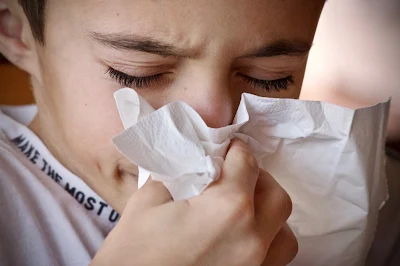Antibiotic Resistance Increasing Due To Air Pollution
The threat of
antibiotic resistance to public health is growing. Antimicrobial resistance,
which includes bacterial resistance to antibiotics, contributed to about 1.27
million deaths worldwide in 2019 and is expected to cause ten million deaths
annually by 2050.
Infections caused by
bacteria, such as pneumonia and urinary tract infections, are treated with
antibiotics. But since they are misused and overused, bacteria with genes that
make them resistant to antibiotics are starting to appear. Infections that emerge
from this are far more challenging to treat.
Humans typically get
antibiotic resistance through tainted food or water. But according to a recent
study, resistant bacteria can also spread in other ways. Researchers from China
and the UK claim that air pollution may also be contributing to the emergence
of antibiotic resistance.
This is the first study
to thoroughly calculate the relationship between elevated antibiotic resistance
and global air pollution.
The
Cost of Pollution in the Air
The analysis analyzed
the results of earlier investigations that examined trends in the airborne
transmission of antibiotic resistance over almost two decades. 12 research
studies from 116 nations, including the UK, US, China, India, and Australia,
were examined. These researches predicted the spread of genes or microorganisms
that are resistant to antibiotics.
The study focused
exclusively on PM2.5, the most hazardous form of air pollution. The size of
these particles is 2.5 micro meters, or about 3% of the diameter of a human
hair strand. PM2.5 can be breathed and is not visible to the unaided eye.
The study discovered
that rising PM2.5 airborne concentrations were accompanied by rising antibiotic
resistance. A 1.1% global increase in antibiotic resistance and 43,654 fatalities
from antibiotic-resistant bacterial illnesses were connected to every 10% increase
in PM2.5 concentration.
According to the study,
north Africa and west Asia have the highest percentages of antibiotic
resistance. The worst PM2.5 pollution was also seen in these places. Antibiotic
resistance was also lower in Europe and North America, which had the lowest
average PM2.5 pollution levels.
The study also found
that Klebsiella pneumoniae resistance to several medications, including
polymyxins, the last line of defense for antibiotics, increased with even a 1%
increase in PM2.5 across all locations. The bacteria that causes pneumonia,
meningitis, and urinary tract infections often spreads throughout hospitals.
Although Klebsiella
cannot be transmitted over the air, research shows that air pollution may
facilitate the growth and spread of resistant bacteria in the environment. The
study demonstrates a strong link between antibiotic resistance and air
pollution. Antibiotic resistance genes were discovered in the DNA of bacteria
sequenced from air samples, despite the scientists' failure to provide proof of
a causal relationship between the two factors. This indicates that PM2.5 could
facilitate the spread of antibiotic resistant bacteria and genes via the air.
Resistance
Equivalence
This study is not the
first to demonstrate a connection between antibiotic resistance and air
pollution.
The risk factor for
tuberculosis, which is brought on by the bacterium Mycobacterium tuberculosis,
has also been demonstrated to be air pollution. This bacterium has evolved
antibiotic resistance to a variety of drugs.
A Hong Kong study also
found a link between outdoor PM2.5 exposure and TB. According to the study, an
increase in PM2.5 levels in the winter was linked to a 3% rise in tuberculosis
cases in the spring and summer that followed.
What underlying
mechanisms may cause antibiotic resistance to spread in air pollution,
meanwhile, is currently unknown. It will be crucial to look at this in next
studies.
We do know from this
study and other studies that PM2.5 can harbor genes or bacteria resistant to
antibiotics that can enter the human body when we breathe.
Furthermore, earlier
research has shown that respiratory droplets can transport antibiotic-resistant
bacteria and their genes from one person to another through the air.
Respiratory droplets can be produced by talking, coughing, and sneezing. It's
also feasible that an individual who has breathed antibiotic-resistant germs as
a result of air pollution may later sneeze or cough and infect someone else
with these bacteria.
Increased temperature
and humidity brought on by air pollution may also facilitate the growth of
bacteria that are resistant to treatment. But again, it will be important for researchers to conduct studies
looking into whether this is the case.
Research into the
involvement of additional factors (other than PM2.5) that may contribute to
antibiotic resistance is crucial. For instance, being exposed to toxins, the
foods we eat, giving animals penicillin, and natural disasters. The connection
between air pollution and antibiotic resistance is obvious, even though we may
not fully understand how it does so. Numerous additional health issues,
including as cardiovascular disease, asthma, decreased lung function, and an
increased risk of depression, are also linked to air pollution.
This study only serves
to bolster the case for urgently improving air quality and reducing pollution
on a worldwide scale given the numerous negative effects air pollution already
has on our health.




